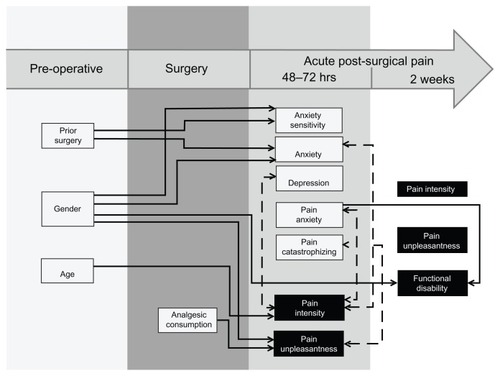Figures & data
Table 1 Recruitment process
Table 2 Peri-operative Information
Table 3 Mean (standard deviation) of pain and related psychological variables for boys, girls, and the total sample when measured 48–72 hours after surgery and 2 weeks after discharge
Table 4 Pain-related psychological variables (48–72 hours after surgery) associated with APSP (48–72 hours after surgery) intensity and unpleasantness using linear regression analysis
Figure 1 Summary of results showing that children who were surgery-naïve had higher levels of anxiety sensitivity and general anxiety compared with children who had undergone surgery in the past.

Table 5 Pain-related psychological variables (48–72 hours after surgery) associated with APSP (2 weeks after discharge) intensity and unpleasantness and functional disability using linear regression analysis